

Photos by Tsunaki Kuwashima (KAIBUTSU)
ー
Professor Yamamoto, you were born in 1943, which makes you 81. You must often get asked about the secret to maintaining a healthy body and mind.
Dr. Yamamoto
Perhaps it’s because I always like to think about new things. As part of my daily routine, I try to spend 30 minutes to an hour or so writing, typically around 500 words of text. I write essays on topics that have nothing to do with research.
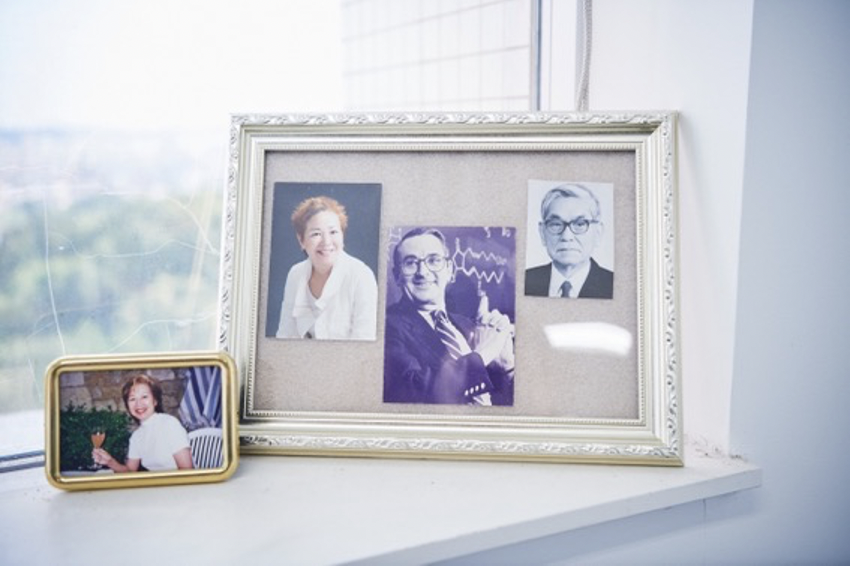

Dr. Yamamoto
keeps portraits of three people beside his desk: from right to left, Prof. Hitoshi Nozaki, who taught him at Kyoto University; Prof. E. J. Corey, who guided him at Harvard University; and his wife, whom he first met by chance on the street.
With your busy schedule, I’m amazed you can find time for that.



Dr. Yamamoto
That reminds me of something I will never forget. I was in my 20s, absorbed in my graduate studies at Harvard. There was an up-and-coming mathematician that I knew there, Heisuke Hironaka, who was much admired by his students.
One day, Dr. Hironaka dropped in to my lab. I was in the middle of an experiment, so I asked him to wait until I had a free moment. After some time, he looked at me and said, “Why are you guys always so busy? I do my most creative thinking when I am lying down, spaced out in my hammock.”
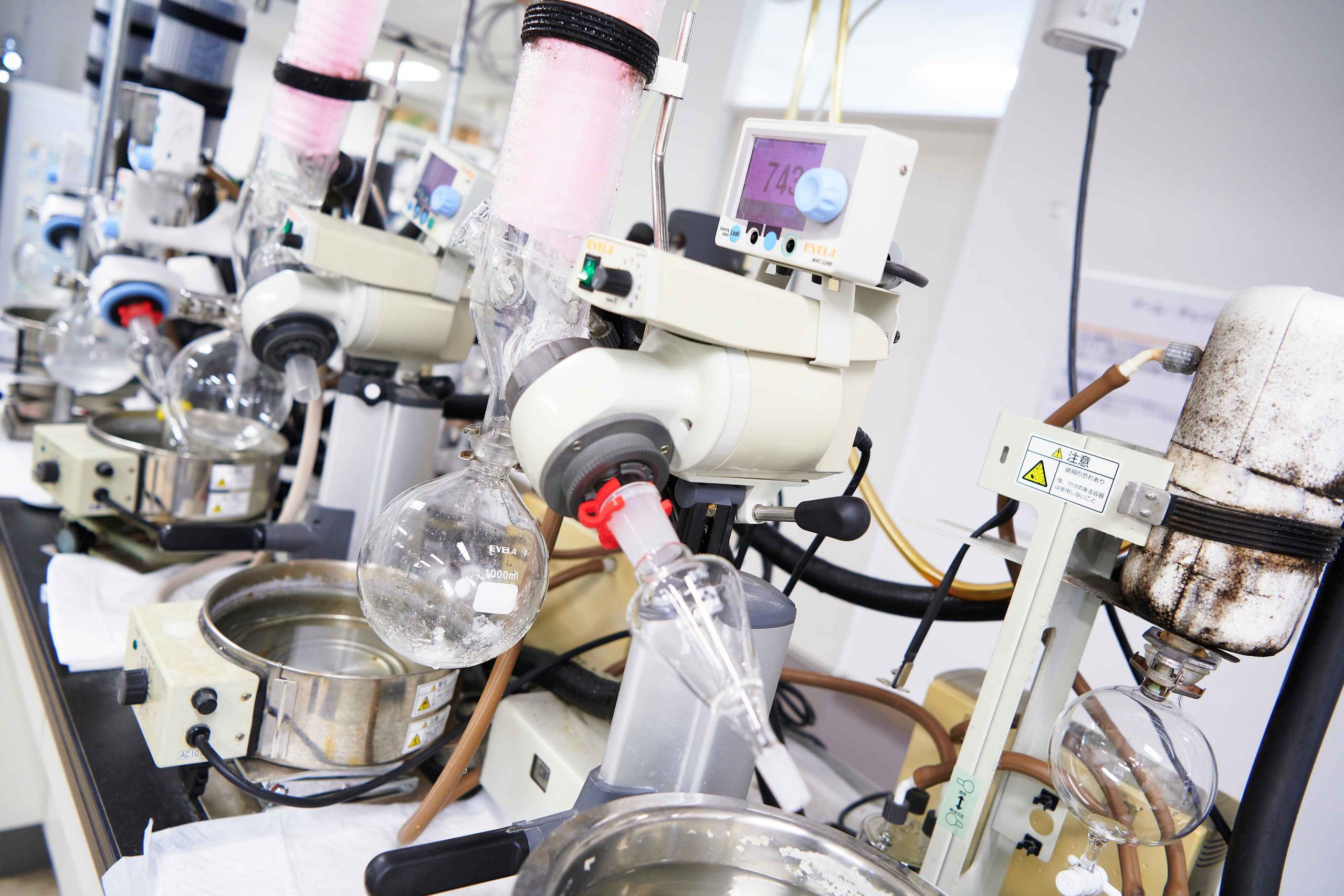

It’s important to make enough time to catch the ideas that bubble up from inside. Thoughts need time to mature. And they need to be jotted down.



Dr. Yamamoto
When I was at Kyoto University, I would get so immersed in doing experiments that I was told, “Don’t you have any chairs to sit down on in your lab.” But I didn’t really get what Dr. Hironaka was saying at the time. Many years later, however, when I had to direct and think constantly about new projects, his words clicked in my mind.
When you get away from the research you are focused on, and look at it from a distance, you can think about it in a more comprehensive, open-minded way. That’s the most creative time for coming up with new ideas. But this kind of thinking can never be cultivated in an education system that is centered on rote learning.
That’s how completely new ideas are born; not through memorization or logic.



Dr. Yamamoto
Right! If you look at researchers who have won Nobel Prizes, many of them came up with new ideas in a flash of inspiration. Great theories don’t come to you when you sit down deliberately to think. Einstein came up with ideas while dozing or napping, while (physicist) Hideki Yukawa hit on ideas while taking a bath.
I read that the same was true for Kary Mullis (Nobel Prize winner in Chemistry in 1993), who is famous for inventing the PCR test method.



Dr. Yamamoto
The story goes that he was driving around in his trusty Honda Civic with his girlfriend when an idea struck him. He stopped the car, wrote down the idea, then continued to enjoy his date (laughs). That was typical of him.
ー
Even if an idea seems to come up unconsciously, it probably requires time to mature.
Dr. Yamamoto
That’s why I tell students to try and think 24 hours a day. You have to keep thinking about your research, even while asleep. If a scientific question comes up in your dreams, that means that it is finally turning into something real and solid.
You really enjoy thinking, don’t you professor?



Dr. Yamamoto
That’s one reason why I always liked doing consulting work for companies. It is unusual for a university professor to do consulting work for even one company, but still today I am working with five companies.
Wow! Five companies, at 80 years old!



Dr. Yamamoto
It is quite amazing, isn’t it? (laughs) I do it because I enjoy thinking and discussion. Not just about science, but all kinds of topics. For example, in just 10 or 15 minutes, I might have to think and say something about a problem that an employee of the company has been trying to solve for two or three years without success. It’s a kind of game, in which I have to say something that he has never thought of. It’s definitely stimulating.


I’ve heard it said that the more specialized researchers become, the better they are at coming up with reasons why something cannot be done. They tend to give up, concluding that a goal is too difficult, or impossible to achieve.



Dr. Yamamoto
I see. I’m the opposite. I only think about what can’t be done.
Oh! Really?



Dr. Yamamoto
That fact that something seems impossible makes it more interesting. As I keep thinking and thinking of a way to make it possible, an idea might suddenly strike me. I then start working on it, and gradually the idea takes on an interesting shape. That’s why I always try to take up things that no one has done before, as a starting point for new ideas.
Thinking about things that can be done is of no use. Of course, doing something that has never been done is extremely difficult. That’s why you usually need to think about such challenges for one or two years. Maybe, after three or four years of continual thinking, you might come up with a world-shaking innovation. It’s a very enjoyable process.
ー
As someone who has conducted research in both Japan and the U.S., what are the biggest differences between the two environments?
Dr. Yamamoto
At universities in the U.S., most of the time is dedicated to research. In contrast, university professors in Japan are required to do so many things that they probably only spend around 10% of their time on research.
As in Japan, we did have faculty meetings in the U.S., but they were only once a month, for one hour. After an hour had passed, everyone would get up and walk out, even if someone was still in the middle of talking. In Japan, meetings could easily drag on for five or six hours. Japanese people have some excellent qualities, but not all of them are used to their full potential, which is a real pity.
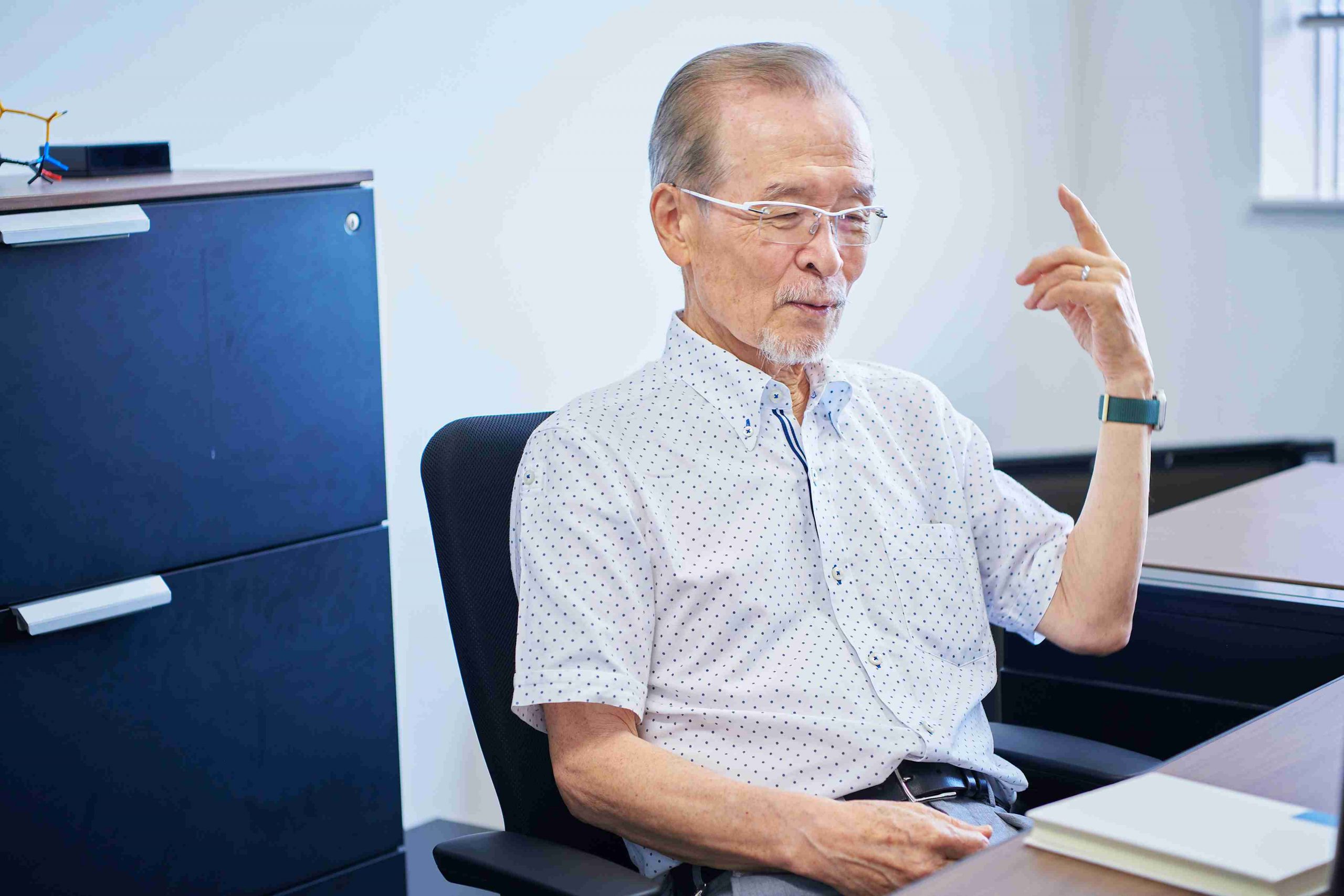

ー
What are the good qualities of Japanese people?
Dr. Yamamoto
They tend to have sensitivity and good judgment. And the ability to think about things freely and broad-mindedly. The great thing is that their abilities go beyond logical thinking.
Maybe all the unique episodes we hear about many Nobel Prize winners from around the world are connected to these kinds of abilities.



Dr. Yamamoto
Very much so! I think that from now on, fewer Nobel Prizes will be won by researchers from universities and more winners will come from the private sector.


ー
The mindset of researchers at private research institutes and companies tends to be that products won’t sell unless they are useful to people, which can lead them to world-changing breakthroughs.
Dr. Yamamoto
When American graduate students think of products that might arise from their research, they typically think about how many people will buy it. They will always think about the size of the market for the product. Everyone has a dream there. On the other hand, the environment is competitive, so there is not so much cooperation.
One of the good things about Japan is the capacity to support an individual with outstanding capabilities to make the whole group stronger. You can find many exampled in history. When very powerful figures such as Oda Nobunaga or Tokugawa Ieyasu emerged, they had 10 or 20 loyal supporters around them.


ー
The power of the individual and the power of the group. Both are essential!
Dr. Yamamoto
There is a very good balance between the two in Japan. This was evident in the case of Kenichi Fukui of Kyoto University (Nobel Prize winner in Chemistry in 1981), for example. The people around him were very supportive.
From my experiences overseas, I feel that American, European, Chinese, and Japanese researchers all think about things in different ways. Even the way they approach the question of whether something is possible or not is different. If we can provide environments that allow these kinds of researchers to think freely and come up with new ideas, we can expect to see more and more interesting findings.
I would like to ask you about your childhood. When did you decide to pursue chemistry as a career?



Dr. Yamamoto
I already loved chemistry when I entered junior high school. At Nada High School, I joined the chemistry club and got up to all kinds of mischief (laughs). One day, I made a “volcano” in one of the school’s flower beds.


Is it possible to make your own volcano?



Dr. Yamamoto
You dig out about 50 cm of soil, put about a bottle of potassium permanganate in the hole, cover it with soil, then pour a bottle of glycerin over the top. It takes about 30 minutes for the glycerin to soak in. Then a column of fire, over two meters high, is produced. I did it just to see the fire.
These days, that would make the national news.



Dr. Yamamoto
Even things like thermite reactions can’t be done in schools today because they are considered dangerous. Plenty of university students today know nothing about this stuff. We used to make and fly our own rockets.
Despite that fascination, you became a chemist, not a rocket scientist. What exactly is it about chemistry that attracts you so much?



Dr. Yamamoto
Research in most fields of science and engineering is a series of failures. You develop a story about how things are expected to go and then you test it by experiment. With chemistry, you find out whether you have failed or not within a day or two.
In the case of physics, you know the result almost instantly. In contrast, in biology research, it can take a year to test your hypothesis. In chemistry, the wait is neither too short, nor too long. For me, it’s just the right amount of time.
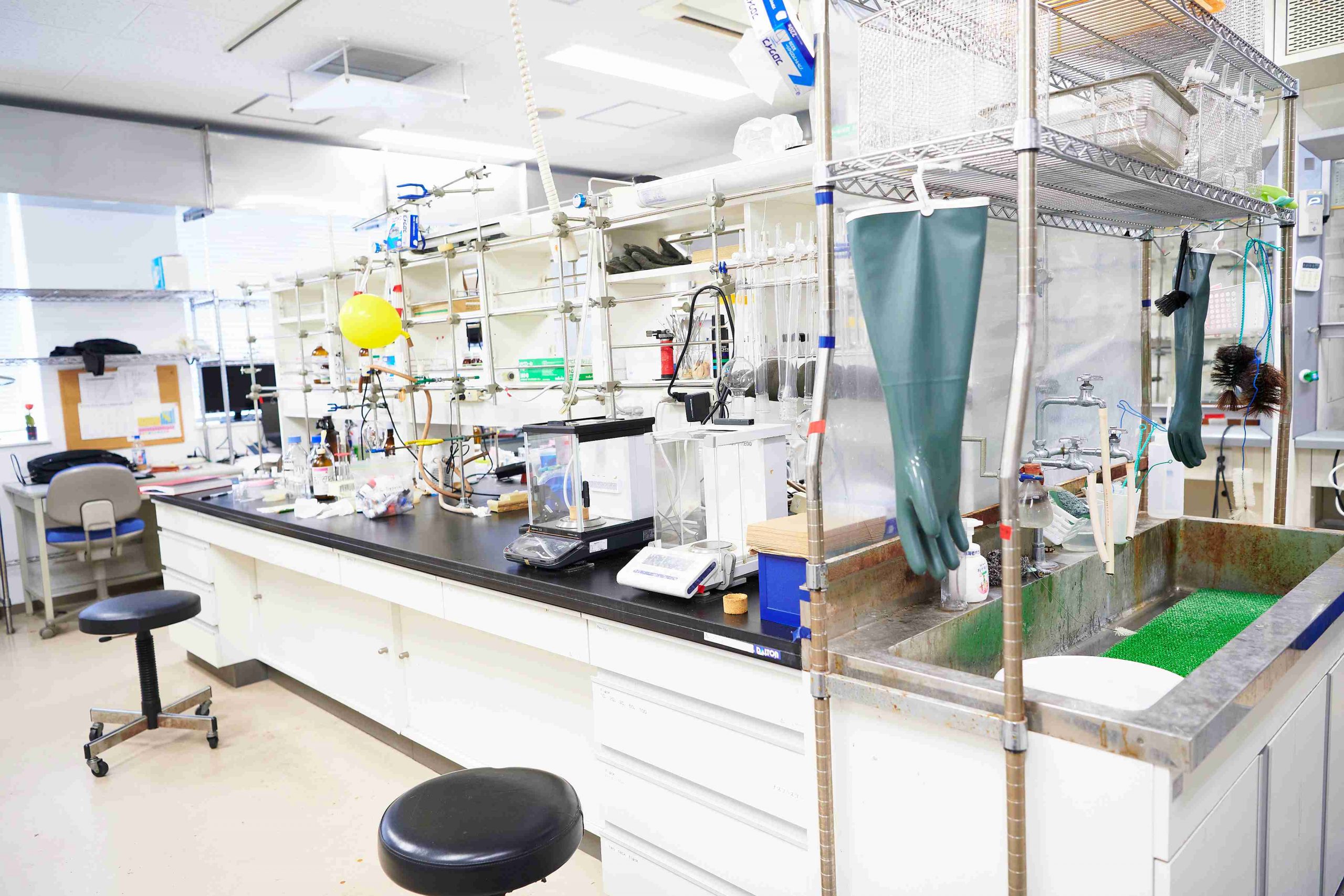

ー
Professor, what message would you give to young people who might be thinking of pursuing a career in chemistry or science?
Dr. Yamamoto
When I was studying at the University of Chicago, there was a program that really impressed me. Around 10 of the most outstanding students from the state of Illinois, one or two from each university, were gathered to live together for a week. For 24 hours, they were joined by a husband-and-wife team of Nobel Prize-level scientists, sharing three meals with the students. That kind of experience is of immense value to students in their early 20s.
I really wanted to do the same thing in Japan, and after making inquiries all over the place, I was able to make it happen. At the graduate schools of top universities like Hokkaido University and Tohoku University, there are always one or two really sharp, strong-headed students. Very puffed-up individuals! Each year, about 15 such graduate students are invited to spend time together on a two-night stay at a hotel near Lake Biwa.
We go there to talk with the students and engage them in serious discussion. Even if they are brilliant at school, they realize after a while that they are not as great as they think. Which is a good thing! We have been running this program for around 20 years under the name “Otsu Conference.” Many of the 200 or so people who have passed through the program are engaged in research and other work that is shaping the future of Japan.


ー
So, you were already doing something that was benefiting society directly, weren’t you?
Dr. Yamamoto
Yes. Investing in people is important for everyone. It can be very beneficial to society.
Another initiative I am involved in is an award program for researchers under the age of 40 who have done excellent, world-class work in the field of chemistry. The winner of this Lectureship MBLA Award, given to one person each year, takes a three-week international tour to give lectures.
The venues of the MBLA Lecture Tour include LMU Munich, ETH Zurich, and the Max Planck Institute in Europe, and Princeton University, MIT, Harvard University, and Stanford University in the U.S. By the time the award winners are finished giving lectures in all 10 locations, they are utterly exhausted (laughs).


Amano Enzyme also offers a “Research Encouragement Award,” so we applaud any initiative like this that supports young people!



Dr. Yamamoto
The real value of this particular award is that it allows the winners to make friends with young researchers and students of the same generation all over the world. After visiting 10 universities, you can make at least 100 new friends. We want the award winners to cherish these friendships.
That friendship will undoubtedly be an asset in their life.



Dr. Yamamoto
My best friend is Karl Barry Sharpless, a chemist who has twice won the Nobel Prize in Chemistry. When he came to Japan on a lecture tour as a young man, his wife had just had a baby. On the day of a scheduled lecture, he suddenly had to take care of the child due to a family emergency. His surprising solution, to deliver his lecture with the baby on his back, made him very famous in Japan. He is the type of person who never gets flustered by things.
ー
Did your best friend influence you?
Dr. Yamamoto
His office was famous for having only a desk and a chair. He would get rid of everything else. He said that otherwise, nothing new could come out of there. I feel the same way. He likens his approach to research to “fishing.” Every day he feels excited about what kind of fish he might hook. Isn’t that a great attitude?
Such friendships can last 10 or 20 years, or even half a century or more. The question is how to get inspiration from such relationships to help you shine internationally? I would like to encourage young people to think about this. It’s a shame if you limit your brilliance to Japan.
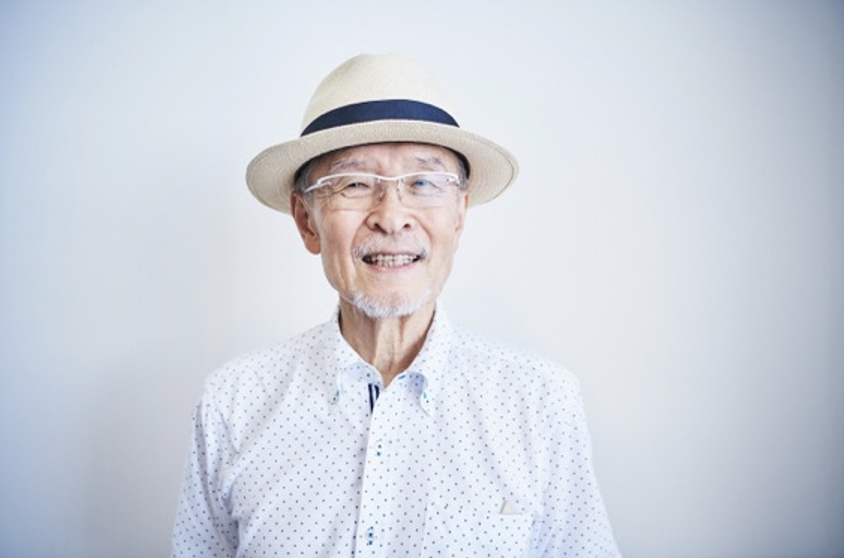

We feel that Dr. Yamamoto’s talk offers some important suggestions about the state of research and development in our fast-changing world. Using the example of a new method of peptide synthesis, he showed us that we can search for and synthesize substances more efficiently if we combine a logical approach with state-of-the-art technology, as opposed to the conventional approach of relying on chance discoveries.
It seems to us that this approach has the potential to bring about a major shift in our own field of enzyme R&D. In particular, his insistence on constantly focusing research efforts on things that seem impossible provides an important guiding principle in the search for new enzymes. We are committed to the development of enzymes that can contribute to solving global problems, making use of the refined sensitivity and cooperative spirit that are unique to the Japanese.
Enzymes are active in every aspect of our world, and we are seeking new possibilities for them.
In this corner, we visit people who are currently active in various fields with "Enzo" and ask them about their stories.

